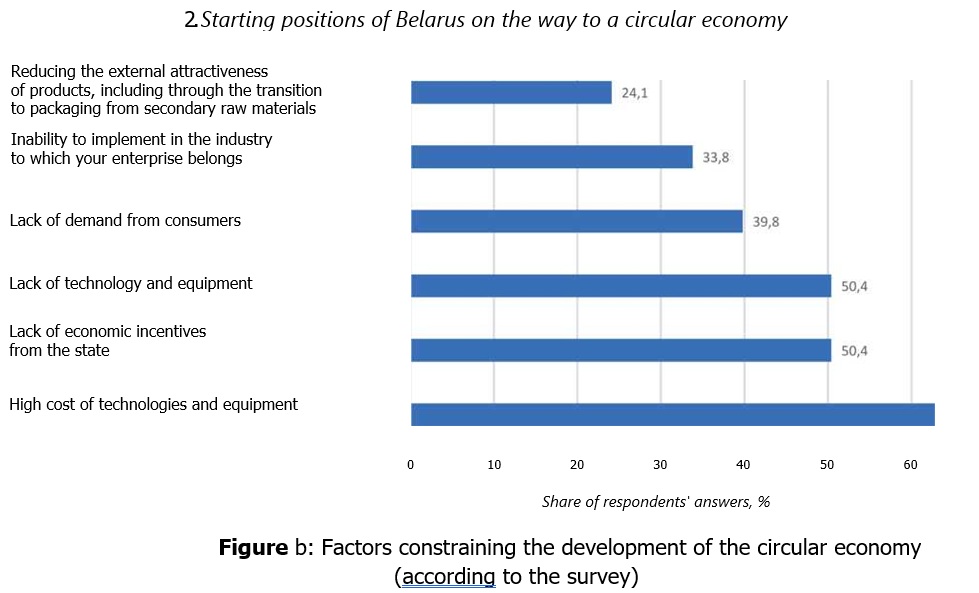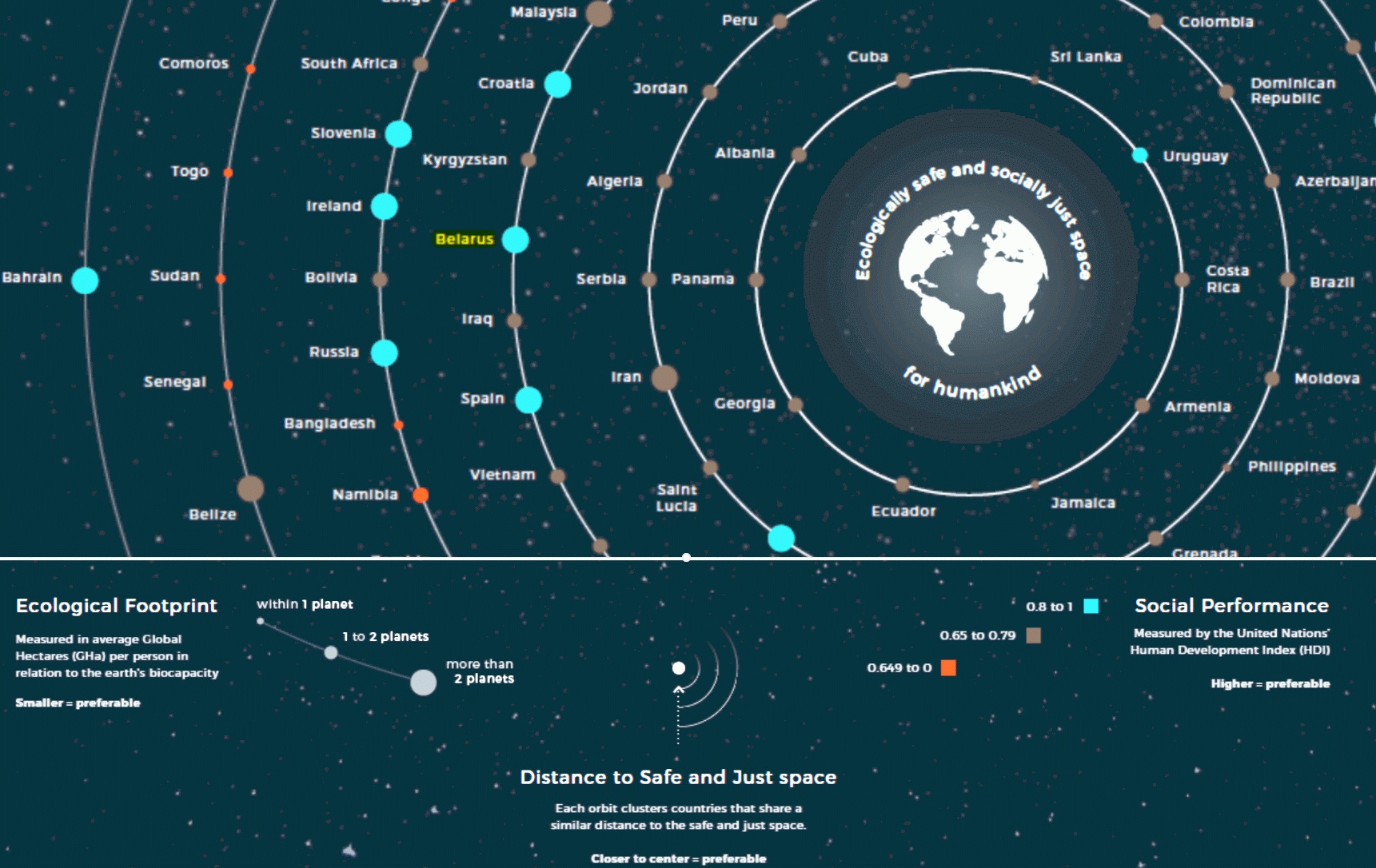Disclaimer:
Please be aware that the content herein has not been peer reviewed. It consists of personal reflections, insights, and learnings of the contributor(s). It may not be exhaustive, nor does it aim to be authoritative knowledge.
Title
Please provide a name for your action learning plan.
Activate learning to advance the development of an inclusive and circular economy in Belarus
Challenge statement
Challenge type: If you are working on multiple challenges, please indicate if this is your "big bet" or "exploratory" challenge.
Please note: we ask you to only submit a maximum of 3 challenges - 1x Big Bet, 2x Exploratory. Each challenge must be submitted individually.
BIG BET
Challenge statement: What is your challenge? (Please answer in specific terms: "Our challenge is that...”.)
Our challenge is that principles and approaches of the inclusive and circular economy are not fully embedded into the socio-economic development of Belarus. We seek to understand how to formulate strategic vision of the circular economy development and how to develop durable solutions for participation of vulnerable groups, with focus on Ukrainian forced migrants, in socio-economic life.
Background: What is the history of your challenge? What is causing or driving it? Who is involved? How does the current situation look like? What undesired effects does it produce?
The National Action Plan for the Development of the Green Economy in the Republic of Belarus for 2021–2025 (the Green Economy Action Plan) identifies the circular economy as one of the priority areas for the development of the green economy in the Republic of Belarus. The Ministry of Natural Resources, the Ministry of Economy, the Ministry of Housing and Utilities, other line ministries and state agencies as well as local authorities, such as governors of Brest and Mogilev regions, work together to accelerate the transition to the circular economy in Belarus. The Government seeks to mainstream the green approach to the public policy development and continuously removes obstacles and introduces incentives to support the green projects. Although the basic conditions for the implementation of such projects have already been created both in policy and in practice, additional efforts should be made to improve regulatory and programme framework and reduce technological barriers for transition to the circular economy. The Government requested UNDP to support the conceptualization the Strategy of the Circular Economy Development until 2035. The onset of the military conflict in Ukraine and restrictive measures against the Russian Federation pose a significant challenge for Belarusian economy and sustaining livelihoods and wellbeing of people. Seeking refuge from the military conflict, thousands of Ukrainians have crossed the border with Belarus. UNDP seeks to develop durable solutions for displacement crisis while also integrating green consideration in its response. This requires a response in the development-humanitarian nexus: strengthening the national capacities and addressing mid-to longer-term socio-economic challenges caused by the crisis – access to services, integration, livelihoods and employment opportunities.
Quantitative evidence: What (official) data sources do you have on this challenge that better exemplifies the importance and urgency of this frontier challenge? You can add text, a link, or a picture.
In 2021, the Government started 10 out of 12 major activities of the Green Economy Action Plan that are focused on transition to circular economy. Two activities – 1) development of an information resource on the generation of waste by enterprises, 2) development of mechanisms and platforms to promote “product-as-a-service” approach – are still to be launched. Although the use of traditional secondary material resources (paper and cardboard waste, glass, plastic, rubber-containing waste) generated in the industrial sector is over 94%, the secondary raw materials are used ineffectively (see below). // According to UNDP internal projections based on assumption of possible 7 per cent GDP contraction, by the end of 2022, 21.3 per cent of the population are projected to be income vulnerable as a result of the restrictive measures and other effects following the military conflict in Ukraine. On top of this, as of 22 March, 4,064 Ukrainian citizens have crossed the border with Belarus. The number of Ukrainian citizens coming to Belarus is expected to grow in the upcoming months. The Government requested UNCT to provide assistance and support to the residents of Ukraine arriving in Belarus, including by strengthening the capacity of local authorities and public organizations to receive and meet the basic needs of Ukrainian displaced persons.

Qualitative evidence: What weak signals have you recently spotted that characterizes its urgency? Please provide qualitative information that better exemplifies the importance and urgency of this frontier challenge. You can add text, a link, or a picture.
Data on prevalence of the principles of the circular economy in Belarusian enterprises: 10% of Belarusian enterprises claim that their business model is built on the principles of the circular economy (“take, make, reuse”); they reduce the consumption of primary raw materials and the volume of processed resources and decrease waste sent for disposal. // 33% of Belarusian enterprises follow the traditional (linear) model ("take, make, waste"); they increase the burden on the environment, both in terms of extracting energy and materials from ecosystems and producing pollutants while producing, processing and disposing various products. // 56% of Belarusian enterprises have a transitional model based on linear approaches to the production organization certain elements of a closed cycle. // Local authorities closely monitor the situation with migrants in the area and support the administration of the sanatorium. Belarusian Red Cross (BRC) are also engaged in local response. Ukrainian citizens are provided with basic services and express overall satisfaction with their quality. At the same time, solutions offered to the migrants are rapid and lack complexity although bear potential for further development to better meet the needs of the Ukrainians in the short- and long-term and ensure their socio-economic integration.

Value proposition: What added value or unique value proposition is your Accelerator Lab bringing to solving this challenge? Why is it your Lab that needs to work on this challenge and not other actors within UNDP, other stakeholders in the country respectively? Why is it worth investing resources to this challenge?
The Government requested UNDP to support the conceptualization the Strategy of the Circular Economy Development until 2035. Responding to the request, the Accelerator Lab will: 1) contribute to a systemic approach to a green economy development and support UNDP’s SDG integrator’s role around green transition, 2) support strategic partnerships, communications and knowledge management, 3) ensure integration of a gender dimension in the Strategy of the Circular Economy Development, 4) support the development of the durable solutions for displacement crisis focusing on the development part of the development-humanitarian nexus.
Short “tweet” summary: We would like to tweet what you are working on, can you summarize your challenge in a maximum of 280 characters?
Accelerator Lab will support the Government in building a strategic “green” vision of the economic development and effectively responding to socio-economic challenges with focus on displacement crisis.
Partners
Who are your top 5 partners for this challenge? Please submit from MOST to LEAST important and state Name, Sector and a brief description of the (intended) collaboration.
Please state the name of the Parter:
Ministry of Natural Resources, Ministry of Economy, Ministry of Housing and Municipal Services, State Committee for Science and Technology, National Academy of Sciences
What sector does our partner belong to?
Government (&related)
Please provide a brief description of the collaboration.
The partners will take the inputs for policy making, and will ensure framework for development, ensure availability of resources and resource flows to business, and will provide technologies for circular transformaiton of businesses
Is this a new and unusual partner for UNDP?
No
Learning questions
Learning question: What is your learning question for this challenge? What do you need to know or understand to work on your challenge statement?
How to increase the number of circular enterprises? What will help: technologies, business models, capacity building, or tax incentives? How to demonstrate the value of inclusive and circular economy for people? Is there a green response to displacement crisis? What are the entry point for UNDP further engagement? What are the durable solutions that will support socio-economic integration of Ukrainians?
To what stage(s) in the learning cycle does your learning question relate?
Sense, Explore
Usage of methods: Relating to your choice above, how will you use your methods & tools for this learning question? What value do these add in answering your learning question?
Collective intelligence - collect persuasive data about raw/secondary materials flow on enterprises; Design thinking - collectively formulate priority directions of circular economy; Horizon Scanning - range the actions in tome to focus on most necessary priority actions first; System Thinking - LNOB, ensure gender mainstreaming.
Existing data gaps: Relating to your choice above, what existing gaps in data or information do these new sources of data addressing? What value do these add in answering your learning question?
Surveys - What kind of business models are best available practices for enterprises? Qualitative interviews - How many circular products can be created? Focus group - What are the most circular sectors of economy? Ecosystem mapping - Which actions of which ministries are most effectively support the circular producers and exporters?
Closing
Early leads to grow: Think about the possible grow phase for this challenge - who might benefit from your work on this challenge or who might be the champions in your country that you should inform or collaborate with early on to help you grow this challenge?
Business enterprises that work with primary materials, apply technologies of deep materials processing / extracting.
END OF ACTION LEARNING PLAN: Thank you! The form saves automatically and your submission has been recorded. You may now exit this window.
!


 5Gender equality
5Gender equality 8Decent work and economic growth
8Decent work and economic growth 9Industry, innovation and infrastructure
9Industry, innovation and infrastructure 10Reduced innequalities
10Reduced innequalities 12Responsible consumption and production
12Responsible consumption and production

Comments
Log in to add a comment or reply.